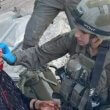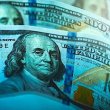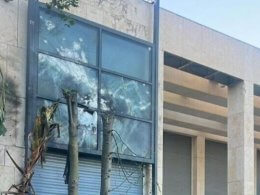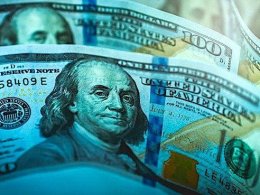The Ronald Reagan Institute's National Security Innovation Base (NSIB) program released its first annual report card on the health, effectiveness, and resilience of the national security and defense arena to help the United States achieve its competitive edge in technology and innovation regarding safety and security. One of the most shocking aspects innovators, policymakers, and national security experts gave a poor grade to was the degrading of the domestic talent base, which is needed to procure new technologies and innovations for the defense sector.
Officials gave the overall grade of the domestic American talent base a "D+." According to officials, the NSIB talent pipeline in America is slowing down with the defense workforce aging and the inability to recruit "diverse talent proficient in emerging technologies." Regarding the foreign talent pipeline, declines have occurred in enrollment from high sources, facing entry obstacles into the U.S.
According to the first criterion of the Talent Base report, the U.S. received a grade of "C-" for the slow development of NSIB talent, which includes availability, quality, and diversity in the science, technology, engineering, and mathematics (STEM) field.
Officials note that American students in K-12 grades have underperformed peers in necessary NSIB capabilities. Currently, the defense workforce lacks the best U.S. talent, given the lack of proficiencies in critical technologies and aging talent.
According to experts, in the latest evaluation by the Program for International Student Assessment (PISA) from the Organization for Economic Co-operation and Development (OECD) on mathematics and science skills and knowledge of students, American students "scored near the OECD average and lagged innovator peers e.g., China, UK, Canada, and Japan."
The report also notes that China graduates more STEM PhDs than America, with California Subject Examinations for Teachers (CSET) predicting that China's production will double that of the U.S. next year. In the U.S., talent proficiency in critical technologies is underrepresented, with "10%" of the defense's prime workforce being in software and deep-technologies and "only 1% in AI/ML."
Experts say the defense sector is exporting its talent to technology firms, with only 4 percent of defense talent inflows coming from the tech sector, while 8 percent of talent heading to technology firms.
Another issue was that the defense industry "lags on the proportion of women in the workforce," dropping the U.S. economy benchmarks in the share of women in every role from "entry-level to senior executives." The research also pointed out this was the case in other NSIB areas where "33% of the total technology workforce was female."
In the second criterion of the report on the Talent Base, experts noted that the U.S. received a "D" when it came to attracting and obtaining a robust pipeline of foreign talent with "in-demand skills needed for national security missions."
According to experts, the U.S. foreign talent pipelines "are not diversified, and foreign NSIB talent faces challenges obtaining visas." Officials note that once foreign talent is engaged in the NSIB, America "excels at retaining it."
The research found that Indian and Chinese students represented around 60 percent of all last year's foreign graduate students. In terms of enrollment, Chinese students decreased by two percent over the past three years, while Indian students decreased to eight percent.
According to a National Science Foundation (NSF) study, around 70 percent of international PhD students wanted to stay in America after graduating. The results found that Chinese students declined to say in the U.S. after graduating. Research also found that two years ago, the H1-B visa that allows American employers to employ foreign workers in special occupations temporarily contained a waitlist that "stood at 875,000 applicants." In January of this year, there were around 387,000 eligible applicants for the H1-B visa obtaining pending interviews with only 36,000 applicants scheduled for an interview."
Finally, researchers concluded that in the past 20 years, the share of the American STEM workforce consisting of foreign talent has "increased from 16% to 23%."
At the end of the Talent Base research, experts explained that for better performance in the U.S., it had to foster a "diverse global talent pipeline" that attracts the globe's top talent and "provides a mechanism to remain in the country upon graduation."
"Interventions under discussion have included H1-B reform and Congress establishing a National Security Innovation Base Visa program," read the report.
To address the aging and underrepresented STEM workforce, researchers called for an increased investment in the Department of Defense's Scholarship for Service output and putting out more educational and informational programs on various career opportunities.
According to the report, this includes programs like hacking 4 Defense, a university course sponsored by the Department of Defense that teaches students to work with the American Defense and intelligence communities to address emerging threats and security challenges.
Researchers also called for "shorter-term training programs eligible for federal programs like Pell Grants."
With public schools and major college universities throughout America adopting equity and diversity progressive policies concerning mathematics and science majors, experts have noted the danger of reduced test performances for college students has led to many being unprepared for the workforce and the expertise in industries like defense. Another problem has been reports of the Communist government in China using students to spy and steal information in America's engineering firms and universities that deal in national security innovation, leading lawmakers to reconsider such actions.
Some have also pointed out that the current spread of "woke" education policies through K-12 education and in college universities has affected STEM-related fields, with students having an anti-military and defense stance thanks to college professors and peers around them.
Related Story: CA School District Enlists ‘Black Lives Matter Task Force” to Teach Woke Curriculum to Grades 7-12










